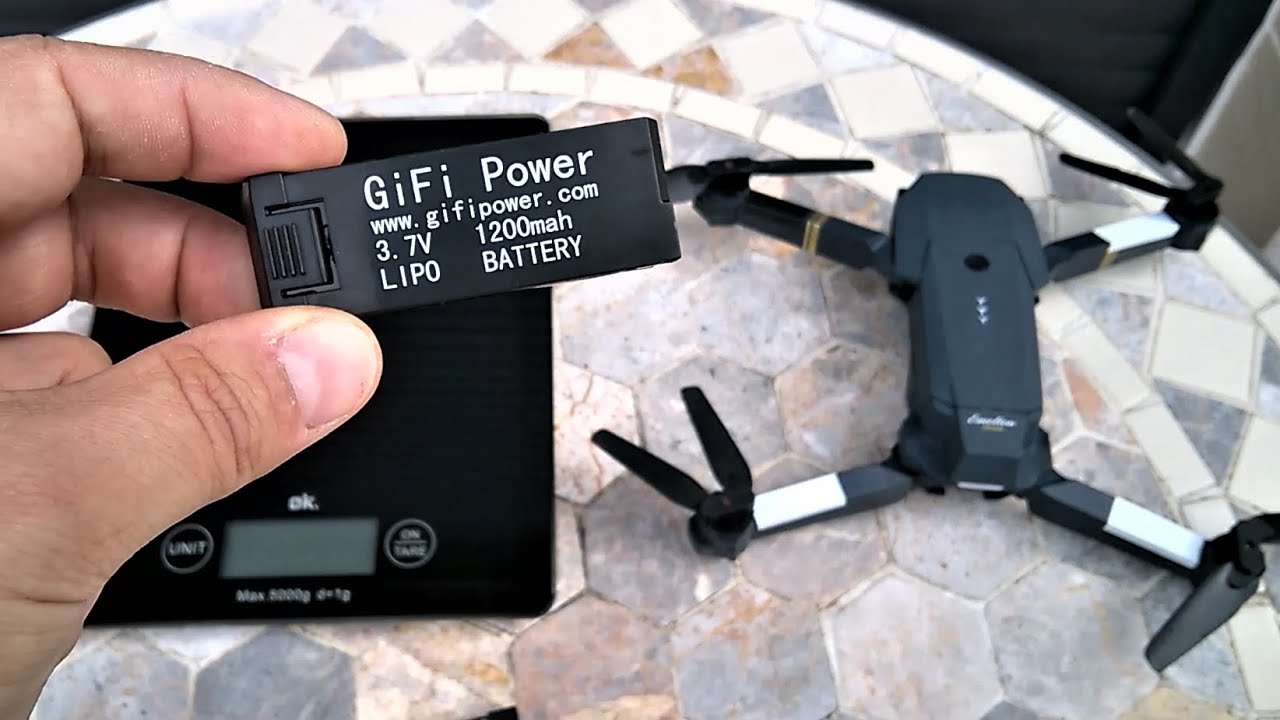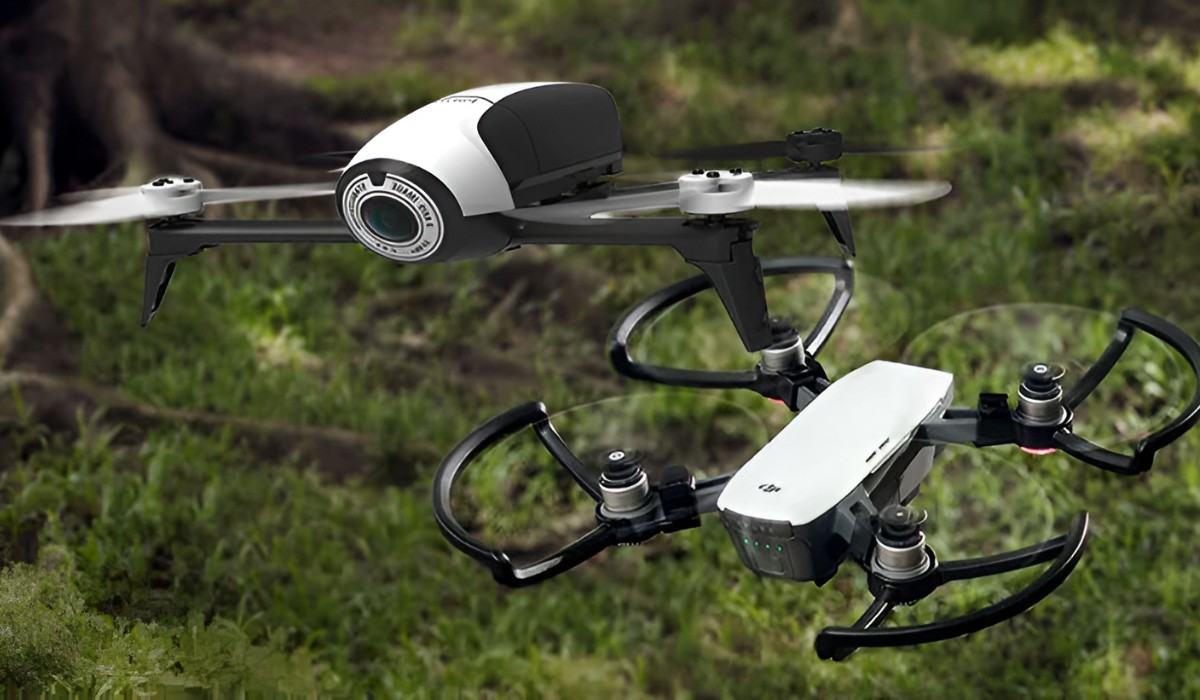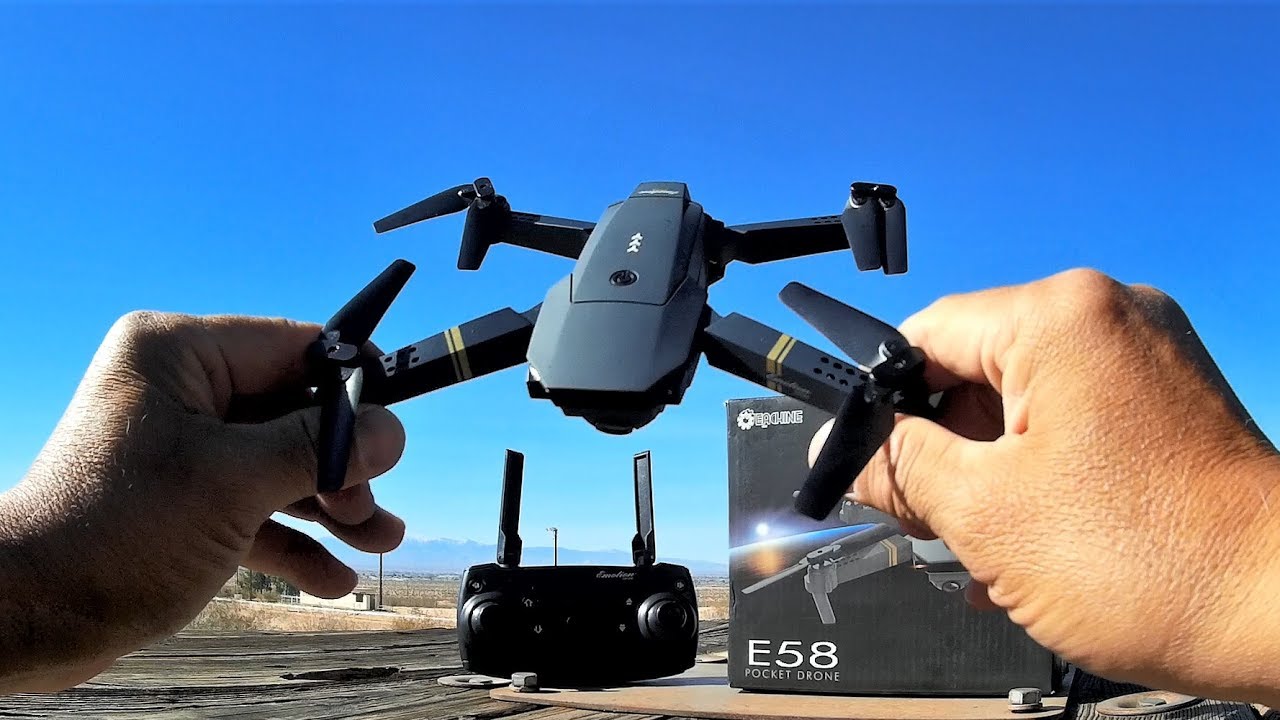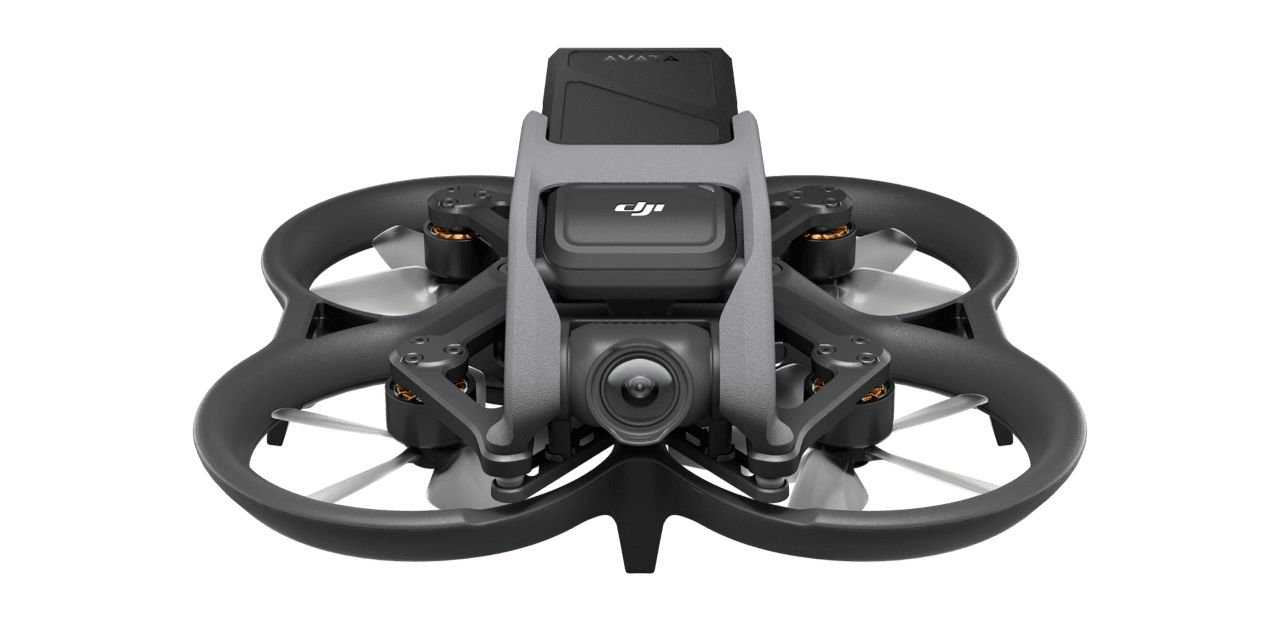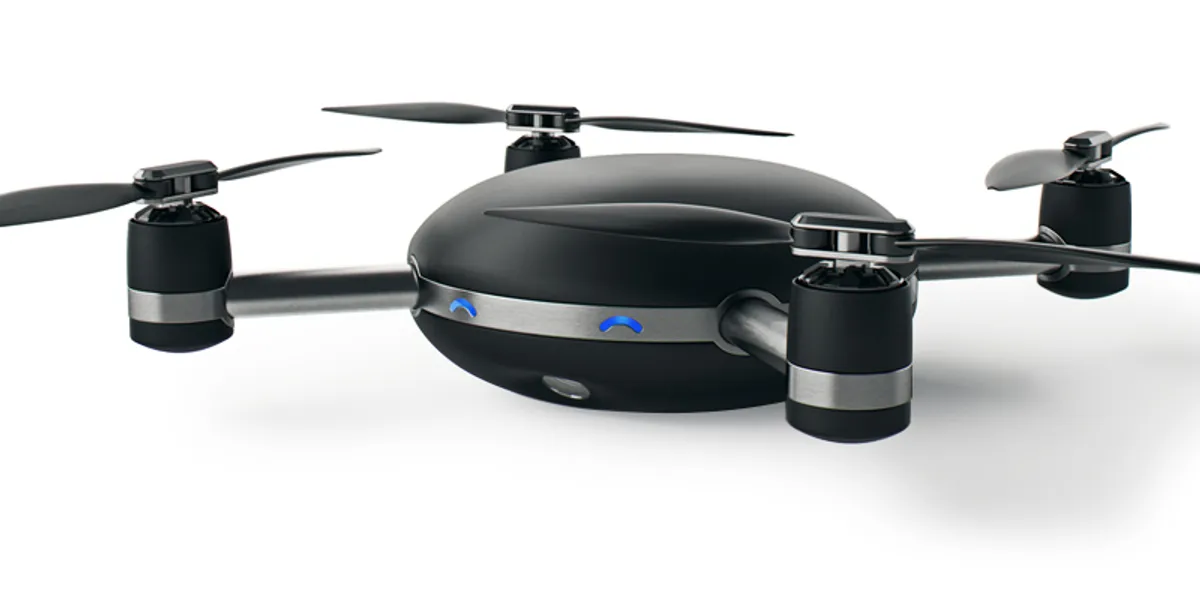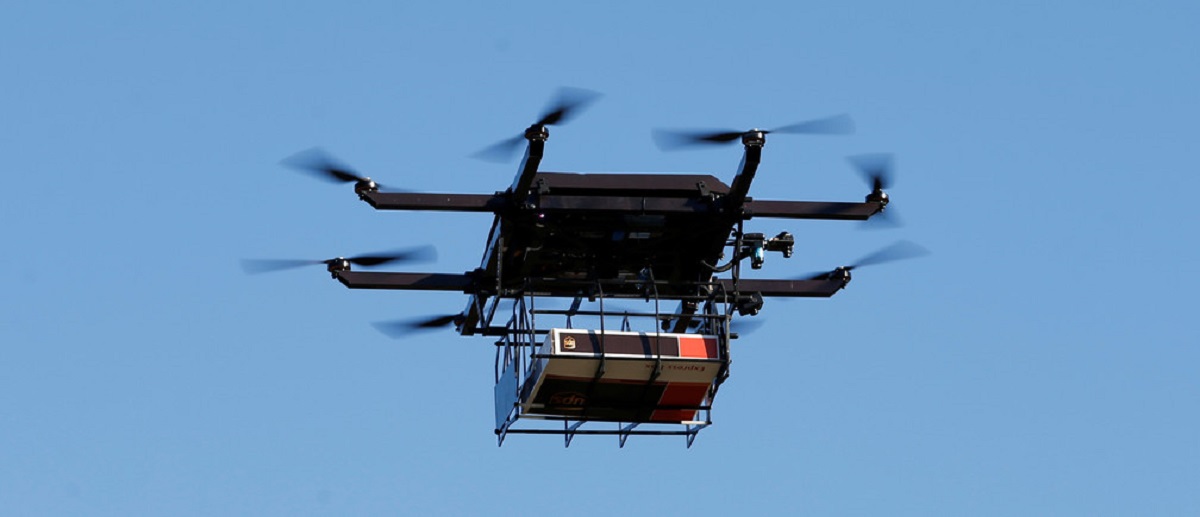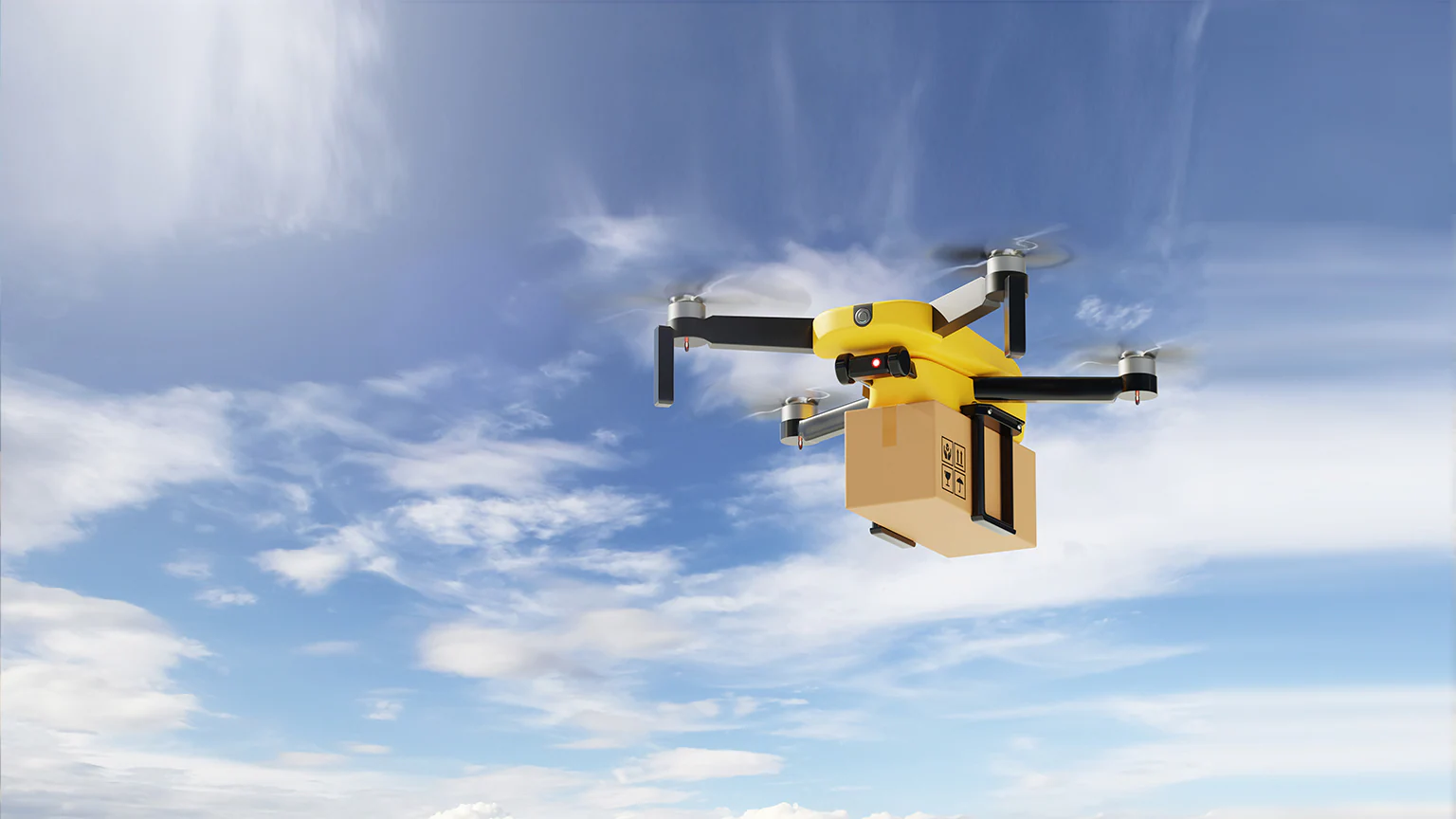Introduction
Welcome to the world of drone flying! Whether you’re a beginner or an experienced pilot, one thing is certain – battery life is a crucial factor in maximizing your flying time and overall enjoyment. The E58 drone is a popular choice among drone enthusiasts due to its portability, ease of use, and affordability. However, like any other drone, it is essential to optimize the battery life to ensure longer flights and minimized downtime.
In this article, we will explore various tips and techniques to help you increase the battery life of your E58 drone. By implementing these strategies, you’ll be able to extend your flying sessions and make the most of your drone experience.
Before we dive into the specifics, it’s important to understand the basic functioning of drone batteries. The E58 drone typically comes with a rechargeable lithium polymer (LiPo) battery, which provides the necessary power to keep your drone airborne. The battery’s capacity, measured in milliampere-hours (mAh), determines how long your drone can fly before needing to be recharged. By optimizing your drone’s battery usage, you can significantly increase its flight time and overall performance.
Now, let’s explore the various tips and techniques to enhance the battery life of your E58 drone. Implementing these strategies will not only prolong your flying time but also ensure the longevity and health of the battery.
Understand Battery Basics
Before diving into the specifics of increasing the battery life of your E58 drone, it’s important to have a basic understanding of how drone batteries work. The E58 drone typically uses a lithium polymer (LiPo) battery, which offers high energy density and longer flight times compared to other battery types.
LiPo batteries have different cell configurations, commonly 1S (single cell) or 2S (dual cell). The E58 drone usually comes with a 1S LiPo battery, meaning it has a single cell. It’s essential to check the battery voltage and capacity to ensure compatibility and efficient performance.
LiPo batteries are known for their sensitivity to charging and discharging. It’s crucial to prevent the battery from discharging below a certain voltage threshold to avoid irreversible damage. Most drones, including the E58, have a low voltage cutoff (LVC) feature that automatically shuts off the drone when the battery voltage drops to a critical level. This feature ensures the longevity of the battery and prevents over-discharging.
Understanding the voltage rating and capacity of your E58 drone’s battery is essential. You can find this information printed on the battery itself or in the product manual. The voltage rating usually ranges from 3.7V to 4.2V per cell, while the capacity is measured in milliampere-hours (mAh), which indicates how much charge the battery can hold.
It’s important to note that the higher the battery capacity, the longer the flight time. However, a higher capacity battery may also increase the weight of the drone, affecting its maneuverability.
By understanding these battery basics, you can make informed decisions about battery selection, charging, and overall maintenance. Let’s explore further strategies to optimize battery performance and increase flight time for your E58 drone.
Calibrate the Battery
Calibrating the battery of your E58 drone is an essential step to ensure accurate battery level readings and optimal performance. Battery calibration involves fully charging and discharging the battery to reset the internal battery monitoring system.
To calibrate the battery, start by fully charging it using the provided charger or a compatible one. Once the battery is fully charged, insert it into your drone and turn it on. Allow the drone to hover in a stable position until the battery level drops to the recommended low voltage cutoff (LVC) limit.
Once the drone shuts off due to low battery voltage, remove the battery and let it cool down for a few minutes. Then, recharge the battery to its maximum capacity once again. This charging and discharging cycle helps reset the internal battery monitoring system and provides more accurate readings of the battery’s remaining capacity.
It’s important to note that battery calibration should be done periodically or whenever you notice discrepancies in the battery level readings. This ensures that your drone’s battery management system functions optimally, preventing premature shutdowns or over-discharging.
Calibrating the battery not only helps improve the accuracy of the battery level indicator but also ensures that you can fly your E58 drone for its maximum potential flight time. It’s a simple and effective way to maintain the battery’s health and maximize its performance.
Now that we’ve covered how to calibrate the battery, let’s move on to other strategies to further increase the battery life of your E58 drone.
Limit Flight Time
While it’s tempting to fly your E58 drone for extended periods, limiting the flight time is crucial for preserving battery life. Continuous flying can put a significant strain on the battery, causing it to drain quickly and potentially reducing its overall lifespan.
One way to limit flight time is to establish a predetermined time limit for each flying session. For example, you can set a timer for 10-15 minutes and make a conscious effort to land the drone before the timer runs out. This practice ensures that you don’t drain the battery excessively and allows for a cool-down period between flights.
Additionally, it’s recommended to take short breaks between flights to allow the battery and the drone’s internal components to cool down. Continuous use without breaks can lead to overheating, which not only affects battery performance but can also damage other critical components of the drone.
While flying, it’s important to monitor the battery level regularly. Most drones have battery level indicators on their controllers or through a mobile app. Keep an eye on the battery level and make a conscious decision to land the drone when the battery reaches a certain percentage, usually around 20-30%. This practice ensures that you have enough battery power left to safely land the drone without risking a sudden shutdown or loss of control.
By limiting flight time and practicing responsible battery management, you can extend the overall lifespan of your E58 drone’s battery. Remember, it’s better to have shorter but more frequent flying sessions than to strain the battery and risk damaging its performance.
Now that we understand the importance of limiting flight time, let’s delve into another crucial aspect of battery life – avoiding overcharging.
Avoid Overcharging the Battery
Overcharging the battery of your E58 drone can have detrimental effects on its performance and overall lifespan. It’s important to follow proper charging practices to avoid overcharging and ensure the longevity of your drone’s battery.
When charging your E58 drone’s battery, always use the provided charger or a compatible one that is specifically designed for LiPo batteries. These chargers are equipped with voltage regulators and safety features to prevent overcharging. Avoid using chargers meant for other types of batteries, as they may not have the necessary safeguards.
One crucial practice to avoid overcharging is to monitor the charging process closely. LiPo batteries should be charged to their specified capacity, usually between 90-95%. Avoid leaving the battery plugged in and charging continuously for an extended period, as it can lead to overcharging and subsequent damage to the battery.
Another key point to keep in mind is to never leave the battery unattended while charging. LiPo batteries have the potential to catch fire or explode if not handled properly. It’s essential to be vigilant and always be present during the charging process to respond quickly in case of any anomalies.
Once the battery is fully charged, promptly disconnect it from the charger. Leaving the battery connected to the charger after it has reached its maximum capacity can increase the risk of overcharging and impact the overall health of the battery.
By following these simple precautions and avoiding overcharging, you can ensure the longevity of your E58 drone’s battery and maintain its optimal performance. Now, let’s move on to the next section, where we discuss the importance of storing the batteries properly.
Store Batteries Properly
Properly storing your E58 drone’s batteries when not in use is crucial for maintaining their performance and overall health. By following the recommended storage guidelines, you can prevent unnecessary battery degradation and extend their lifespan.
When storing LiPo batteries, it’s important to keep them in a cool, dry, and well-ventilated area. High temperatures can degrade the battery cells and reduce their capacity. Avoid storing the batteries in direct sunlight, near radiators, or in any place with extreme temperature fluctuations.
It’s also essential to store the batteries at the correct voltage level. LiPo batteries should be stored at around 3.7-3.8 volts per cell. Most drones, including the E58, have a storage mode that automatically sets the battery’s voltage to the optimal level for storage. If your drone doesn’t have this feature, you can manually discharge the battery to the recommended storage voltage using a dedicated LiPo battery discharger or by safely flying the drone until the battery reaches the desired voltage level.
Additionally, it’s advisable to store LiPo batteries individually or with the corresponding drone model. Avoid keeping loose batteries or batteries in contact with metal objects, as this can potentially lead to short circuits or other safety hazards.
Regularly check the batteries during storage to ensure they’re in good condition. Look for any signs of physical damage, such as swelling, punctures, or leakages. If you notice any abnormalities, it’s best to dispose of the battery safely following the recommended guidelines.
By storing your E58 drone’s batteries properly, you can maintain their capacity and performance, ensuring they are ready for use when you want to fly. Taking the time to follow these storage guidelines will ultimately prolong the lifespan of your batteries.
Now that we’ve covered the importance of proper battery storage, let’s move on to the next section, where we discuss the significance of flying in optimal conditions.
Fly in Optimal Conditions
Flying your E58 drone in optimal conditions not only ensures a better flying experience but also contributes to extending your battery life. By considering the environmental factors before taking off, you can maximize the efficiency and performance of your drone’s battery.
One important factor to consider is the weather. It’s best to fly your drone on clear and calm days with minimal wind. Windy conditions can force the drone to work harder to maintain stability, causing the battery to drain faster. Be aware of the wind conditions and avoid flying in strong gusts or turbulent areas.
Extreme temperatures can also impact your battery life. Both high and low temperatures can affect the battery’s chemical reactions and decrease its overall performance. If flying in hot weather, allow the battery to cool down to the ambient temperature before taking off. Similarly, in cold weather, pre-warm the battery to ensure optimal performance.
When flying in hot weather, it’s crucial to monitor the battery temperature during flight. If your drone has a built-in temperature monitoring feature, keep an eye on the battery temperature and land the drone if it exceeds the recommended threshold. Overheating can not only degrade the battery but also pose safety risks. Giving the battery a break to cool down before resuming flight can help maintain its longevity.
In addition to weather conditions, consider the flying environment itself. Avoid flying in areas with high electromagnetic interference, such as power lines, radio towers, or strong radio signals. Interference can disrupt the drone’s communication with the controller and cause the motors to work harder, leading to increased battery consumption.
Optimizing your flight path can also contribute to maximizing battery life. Plan your flight route efficiently to minimize unnecessary maneuvers and excessive acceleration. Smooth and gradual movements require less power from the battery, allowing for longer flight times.
By flying in optimal conditions, you can reduce the strain on your E58 drone’s battery and optimize its performance. Taking these factors into consideration before each flight will help you make the most of your battery’s capacity.
Now, let’s move on to the next section where we discuss the importance of reducing drone weight.
Reduce Drone Weight
Reducing the weight of your E58 drone can have a significant impact on its overall performance and battery life. By minimizing unnecessary weight, you can increase flight time and improve maneuverability.
Excess weight can put a strain on the drone’s motors, requiring more power from the battery to maintain flight. To reduce weight, consider removing any unnecessary accessories or attachments that are not essential for your flight. For example, if you’re not using a camera or other payload, detach it to lighten the drone.
Another aspect to consider is the use of lighter propellers. In some cases, alternative propellers made of lightweight materials such as carbon fiber can reduce the overall weight of the drone. However, it’s important to ensure compatibility and proper balancing of the propellers with your drone model.
Regularly inspect your drone for any loose or damaged parts. Loose screws or connections can not only affect flight stability but also add unnecessary weight. Tighten any loose screws and ensure all components are securely fastened.
While reducing weight is important, it’s equally crucial to maintain the structural integrity and balance of the drone. Make sure not to compromise the drone’s stability or cause vibrations by removing essential components or altering its design.
Remember that reducing drone weight is a balance between removing unnecessary components and maintaining the drone’s stability and structural integrity.
By reducing the weight of your E58 drone, you can improve its efficiency and increase the flight time. Lightening the load on the motors will require less power from the battery, ultimately extending its overall lifespan.
Now that we’ve discussed the importance of reducing drone weight, let’s move on to the next section where we explore the significance of maintaining the 6-Axis Gyro system.
Maintain the 6-Axis Gyro System
The 6-Axis Gyro system is a crucial component of your E58 drone that helps stabilize and control its movements during flight. Proper maintenance and calibration of the gyro system can contribute to better flight performance and optimized battery usage.
Regular calibration of the 6-Axis Gyro system is essential to ensure accurate readings and precise control of the drone. Calibration can be done through the drone’s user interface or mobile app, following the manufacturer’s instructions. By calibrating the gyro system regularly, you can maintain proper flight stability and reduce unnecessary movements that can drain the battery.
In addition to calibration, it’s important to keep the drone’s gyro system clean and free from dirt, debris, or any other obstructions. Inspect the drone’s body and ensure that there are no loose or damaged components that could affect the gyro’s performance.
Furthermore, avoiding extreme maneuvers or sudden changes in direction can help minimize unnecessary stress on the gyro system and the drone overall. Smooth and controlled movements not only improve flight stability but also contribute to optimal battery usage.
Regularly updating the firmware of your E58 drone is another crucial aspect of maintaining the 6-Axis Gyro system. Manufacturers often release firmware updates to enhance the drone’s stability, performance, and battery optimization. Check for updates on the manufacturer’s website or through their designated app and ensure your drone is running the latest firmware version.
By maintaining and calibrating the 6-Axis Gyro system, you can ensure that your E58 drone flies smoothly and efficiently, resulting in improved battery life. Regularly check for software updates and keep the gyro system clean to optimize its performance.
Now, let’s move on to the final section, where we discuss the importance of following the manufacturer’s guidelines for battery and drone usage.
Keep Firmware Updated
Keeping the firmware of your E58 drone up to date is crucial for optimal performance, stability, and battery efficiency. Manufacturers release firmware updates to address any bugs, enhance features, and ultimately improve your drone’s overall functionality.
Firmware updates often include optimizations specifically designed to extend the battery life of your drone. These updates may offer improved power management, flight algorithms, or other enhancements that can contribute to more efficient battery usage.
It’s important to regularly check for firmware updates on the manufacturer’s website or through the designated app for your E58 drone. Follow the instructions provided by the manufacturer to safely update the firmware and ensure compatibility with your drone model.
When updating the firmware, it’s crucial to do so in a controlled environment with a stable internet connection. Interruptions or errors during the update process can potentially damage the drone or result in a loss of functionality.
By keeping your E58 drone’s firmware updated, you can take advantage of the latest improvements in battery management and performance enhancements. It’s a simple yet powerful step to ensure that your drone operates at its best with improved battery efficiency.
Now, let’s move on to the final section, where we emphasize the importance of following the manufacturer’s guidelines for battery and drone usage.
Follow Manufacturer’s Guidelines
Following the manufacturer’s guidelines for battery and drone usage is essential to ensure the safety, longevity, and optimal performance of your E58 drone. The manufacturer provides specific recommendations and instructions based on their knowledge and expertise with the product.
Read through the user manual thoroughly and familiarize yourself with the guidelines provided by the manufacturer. This includes information on battery charging, storage, and maintenance, as well as instructions for operating the drone safely and responsibly.
Pay attention to the recommended charging methods and voltage ranges specified by the manufacturer. Using the wrong charger or exceeding the recommended voltage can lead to battery damage and potential safety hazards.
The manufacturer may also provide guidelines for optimal flight conditions, maximum flight times, and recommended operating temperatures. Adhering to these guidelines ensures that you’re using the drone within its intended parameters and preventing unnecessary strain on the battery and other components.
Additionally, the manufacturer may offer specific tips and insights for increasing the battery life and overall performance of the E58 drone. These recommendations may include flight techniques, maintenance routines, or specific settings to optimize battery usage.
By following the manufacturer’s guidelines, you can make informed decisions and take appropriate actions to safeguard the battery and prolong its lifespan. The manufacturer’s expertise and knowledge are invaluable in maximizing the performance and longevity of your E58 drone.
Now that we’ve covered the importance of following the manufacturer’s guidelines, let’s summarize the key points we discussed in this article.
Conclusion
Optimizing the battery life of your E58 drone is essential for extended flight time and maximum enjoyment. By implementing the strategies discussed in this article, you can significantly increase your drone’s battery performance and overall efficiency.
We started by understanding the basics of drone batteries, such as their voltage, capacity, and operation. Calibrating the battery and limiting flight time were highlighted as crucial techniques for maintaining battery health and performance. Avoiding overcharging and storing the batteries properly were emphasized to prevent damage and extend their lifespan.
We then explored the significance of flying in optimal conditions, reducing the weight of the drone, and maintaining the 6-Axis Gyro system. These practices not only enhance flight stability but also contribute to improved battery efficiency and extended flight time. Lastly, we emphasized the importance of keeping the firmware updated and following the manufacturer’s guidelines for battery and drone usage.
By following these tips and techniques, you can optimize the battery life of your E58 drone and make the most out of your flying experience. Remember to check the manufacturer’s instructions, stay informed with firmware updates, and adopt responsible flying practices to ensure safe and efficient operation of your drone.
With these strategies in mind, you can enjoy longer flight times, explore new areas, capture breathtaking footage, and fully immerse yourself in the exciting world of drone flying.







